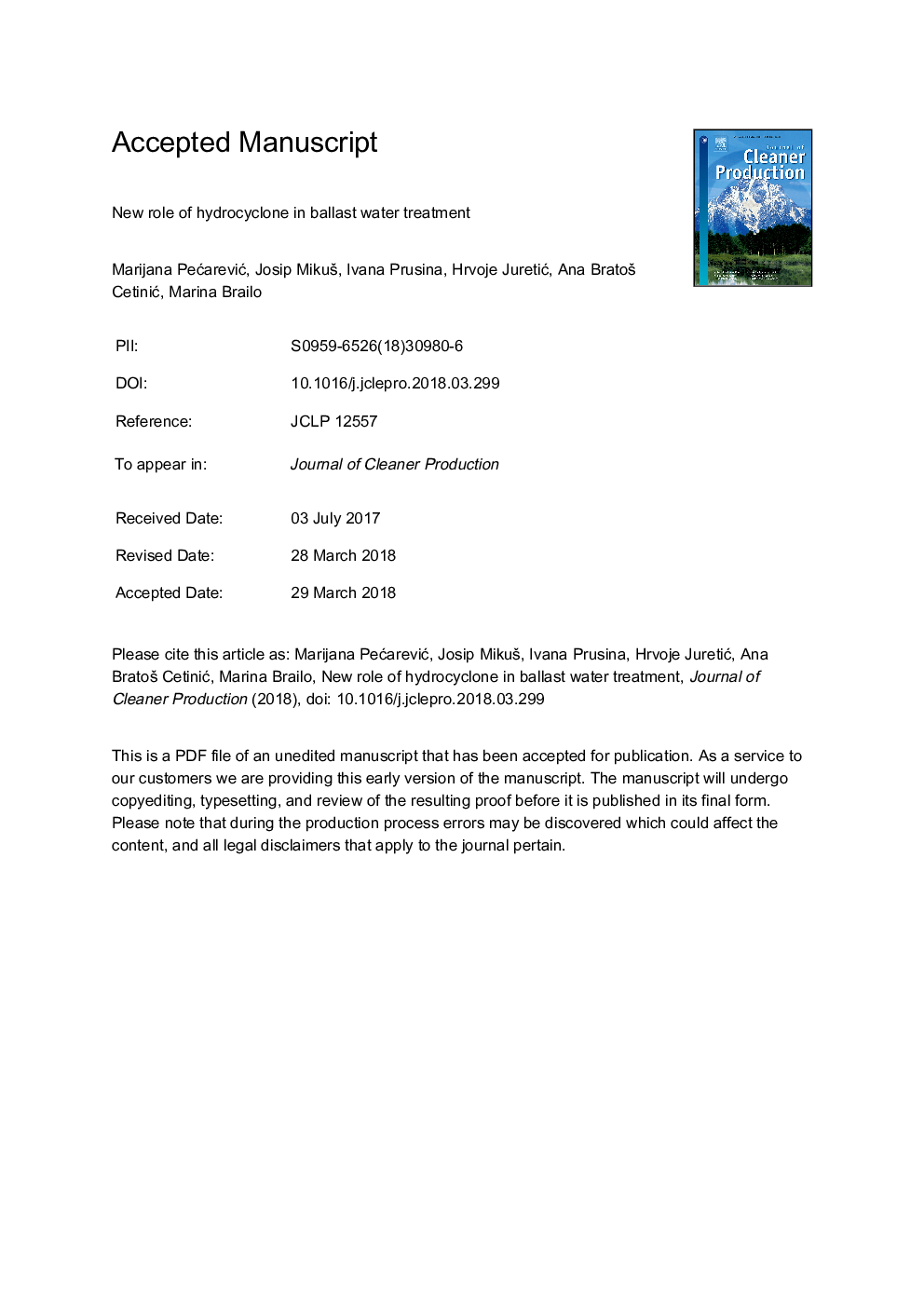| Article ID | Journal | Published Year | Pages | File Type |
|---|---|---|---|---|
| 8095478 | Journal of Cleaner Production | 2018 | 21 Pages |
Abstract
Laboratory experiments were carried out to determine the effects of an integrated ballast water treatment system on the viability of test species of phytoplankton (Tetraselmis suecica) and zooplankton (Artemia salina cysts and nauplii). The effects of two components of the treatment system were tested: cyclonic separation in the hydrocyclone (HC) and radiation in the ultraviolet (UV) reactor. The approach employed in this study used the HC not only for reduction of the suspended solid content but also for inactivation of living organisms in ballast water. The application of UV radiation following treatment in the HC contributed to a reduction in the number of living organisms in the ballast water. Better separation efficiency was obtained in the experiments with higher inlet pressure and in which organisms with greater mass and density were used. This study demonstrated the successful use of a HC for inactivation of some planktonic organisms. That provides an alternative to the traditional purpose of a HC, namely separation or reduction of suspended matter and organisms in ballast water. These results suggest that optimizing the HC system can potentially improve ballast water treatment capacity.
Related Topics
Physical Sciences and Engineering
Energy
Renewable Energy, Sustainability and the Environment
Authors
Marijana PeÄareviÄ, Josip MikuÅ¡, Ivana Prusina, Hrvoje JuretiÄ, Ana BratoÅ¡ CetiniÄ, Marina Brailo,
